-
 Bitcoin
Bitcoin $101,885.2651
-0.96% -
 Ethereum
Ethereum $2,241.4771
-2.19% -
 Tether USDt
Tether USDt $1.0003
-0.01% -
 XRP
XRP $2.0230
-3.06% -
 BNB
BNB $622.7870
-1.84% -
 Solana
Solana $134.1802
-1.39% -
 USDC
USDC $0.9999
-0.02% -
 TRON
TRON $0.2673
-2.01% -
 Dogecoin
Dogecoin $0.1539
-2.02% -
 Cardano
Cardano $0.5489
-1.39% -
 Hyperliquid
Hyperliquid $35.4321
3.12% -
 Bitcoin Cash
Bitcoin Cash $455.5100
-1.48% -
 Sui
Sui $2.5070
-3.31% -
 UNUS SED LEO
UNUS SED LEO $9.0530
0.93% -
 Chainlink
Chainlink $11.8065
-2.10% -
 Stellar
Stellar $0.2311
-2.96% -
 Avalanche
Avalanche $16.8439
-0.69% -
 Toncoin
Toncoin $2.7521
-4.05% -
 Shiba Inu
Shiba Inu $0.0...01078
-1.60% -
 Litecoin
Litecoin $80.6245
-1.52% -
 Hedera
Hedera $0.1367
-0.74% -
 Monero
Monero $303.5650
-2.41% -
 Ethena USDe
Ethena USDe $1.0006
-0.01% -
 Dai
Dai $1.0000
-0.01% -
 Polkadot
Polkadot $3.2265
-2.56% -
 Bitget Token
Bitget Token $4.0677
-3.51% -
 Uniswap
Uniswap $6.2998
-2.54% -
 Pi
Pi $0.5072
-0.68% -
 Pepe
Pepe $0.0...08930
-4.32% -
 Aave
Aave $231.6316
-1.51%
How to combine the AVL indicator with trading volume? What are the techniques for matching volume and price?
The AVL indicator helps traders assess crypto trends by averaging volume over time, enhancing analysis when combined with trading volume for informed decisions.
May 24, 2025 at 03:50 am
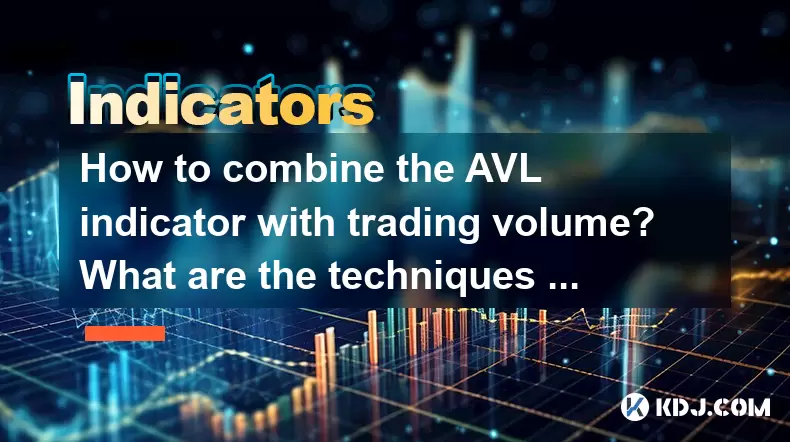
Introduction to AVL Indicator and Trading Volume
The AVL (Average Volume Line) indicator is a powerful tool used by traders to assess the strength and potential trend direction of a cryptocurrency. By combining the AVL indicator with trading volume, traders can enhance their analysis and make more informed decisions. Trading volume, on the other hand, represents the total number of shares or contracts traded within a specified time frame, which is crucial for understanding market sentiment and potential price movements. In this article, we will explore how to effectively combine the AVL indicator with trading volume and discuss techniques for matching volume and price.
Understanding the AVL Indicator
The AVL indicator is calculated by averaging the trading volume over a specific period. It is typically displayed as a line on a chart, which helps traders identify periods of high and low volume. When the AVL line is rising, it indicates increasing volume, suggesting stronger interest in the cryptocurrency. Conversely, a declining AVL line suggests decreasing interest. The AVL indicator is particularly useful for spotting potential breakouts or reversals when combined with other technical indicators.
Integrating AVL Indicator with Trading Volume
To integrate the AVL indicator with trading volume, traders should follow these steps:
Add the AVL indicator to your chart: Most trading platforms allow you to add the AVL indicator easily. Navigate to the indicators menu and select the AVL indicator. Adjust the period to suit your trading strategy.
Compare the AVL line with the volume histogram: The volume histogram is usually displayed at the bottom of the chart. Observe how the AVL line aligns with the peaks and troughs of the volume histogram. A rising AVL line coupled with high volume peaks can signal a strong bullish trend.
Identify divergence: Look for instances where the AVL line diverges from the price action. For example, if the price is rising but the AVL line is declining, it may indicate weakening momentum and a potential reversal.
Confirm trends with volume spikes: Use volume spikes to confirm the strength of a trend. A breakout accompanied by a significant increase in volume, as indicated by the AVL line, is more likely to be sustainable.
Techniques for Matching Volume and Price
Matching volume and price involves analyzing the relationship between trading volume and price movements to make informed trading decisions. Here are some key techniques:
Volume Confirmation: Use volume to confirm price movements. If the price breaks out of a resistance level with a corresponding increase in volume, it suggests strong buying pressure and a higher likelihood of a sustained uptrend.
Volume Divergence: Pay attention to divergences between volume and price. If the price is rising but volume is declining, it may indicate that the uptrend is losing steam and a reversal could be imminent.
Volume at Support and Resistance: Analyze volume levels when the price approaches key support and resistance levels. High volume at these levels can signal strong interest and potential breakouts or breakdowns.
Volume Climaxes: Look for volume climaxes, which are periods of extremely high volume that often precede significant price reversals. A volume climax can signal that a trend is reaching its exhaustion point.
Applying Volume and Price Matching in Trading
To apply volume and price matching effectively in your trading strategy, follow these detailed steps:
Identify Key Levels: Start by identifying key support and resistance levels on your chart. These levels are crucial for understanding potential price movements.
Monitor Volume at Key Levels: When the price approaches these levels, closely monitor the trading volume. A significant increase in volume at a support level can indicate strong buying interest, while high volume at a resistance level may suggest strong selling pressure.
Analyze Volume Trends: Observe the overall trend in volume. A consistent increase in volume over time can signal growing interest in the cryptocurrency, while a consistent decrease may indicate waning interest.
Use Volume Indicators: Incorporate volume indicators such as the On-Balance Volume (OBV) or the Volume Weighted Average Price (VWAP) to gain additional insights into the relationship between volume and price.
Confirm Breakouts and Breakdowns: Use volume to confirm breakouts and breakdowns. A breakout above a resistance level with high volume is more likely to be sustained, while a breakdown below a support level with high volume suggests a strong bearish move.
Watch for Volume Spikes: Pay attention to sudden spikes in volume, as they can signal significant market events or shifts in sentiment. A volume spike can precede a major price movement, so be prepared to act quickly.
Case Studies of AVL and Volume Analysis
To illustrate the practical application of combining the AVL indicator with trading volume, let's examine a couple of case studies:
Case Study 1: Bullish Breakout: Suppose you are analyzing Bitcoin (BTC) and notice that the price is approaching a key resistance level. The AVL line has been steadily rising, and as the price breaks above the resistance level, there is a significant spike in volume. This combination of a rising AVL line and high volume at the breakout confirms the strength of the bullish move, suggesting a good entry point for a long position.
Case Study 2: Bearish Reversal: In another scenario, you are monitoring Ethereum (ETH) and observe that the price is in an uptrend but the AVL line starts to decline. As the price reaches a new high, the volume is significantly lower than during previous highs. This divergence between the price and the AVL line, coupled with declining volume, indicates weakening momentum and a potential bearish reversal. This could be a signal to exit a long position or consider a short position.
Frequently Asked Questions
Q: Can the AVL indicator be used alone for trading decisions?
A: While the AVL indicator provides valuable insights into trading volume trends, it is best used in conjunction with other technical indicators and price action analysis. Relying solely on the AVL indicator may lead to incomplete or misleading signals.
Q: How often should I adjust the period of the AVL indicator?
A: The period of the AVL indicator should be adjusted based on your trading timeframe and strategy. Short-term traders may prefer a shorter period, such as 10 or 20 days, while long-term traders might opt for a longer period, such as 50 or 100 days. Regularly review and adjust the period to ensure it aligns with your trading goals.
Q: Are there any specific cryptocurrencies where the AVL indicator and volume analysis work best?
A: The AVL indicator and volume analysis can be applied to any cryptocurrency with sufficient trading volume. However, they tend to be more effective on major cryptocurrencies like Bitcoin (BTC) and Ethereum (ETH), where trading volume is typically higher and more reliable.
Q: How can I use the AVL indicator and volume analysis to identify potential entry and exit points?
A: To identify entry points, look for rising AVL lines and high volume at key support levels or during bullish breakouts. For exit points, consider declining AVL lines and low volume at resistance levels or during bearish reversals. Always confirm these signals with other technical indicators and price action analysis.
Disclaimer:info@kdj.com
The information provided is not trading advice. kdj.com does not assume any responsibility for any investments made based on the information provided in this article. Cryptocurrencies are highly volatile and it is highly recommended that you invest with caution after thorough research!
If you believe that the content used on this website infringes your copyright, please contact us immediately (info@kdj.com) and we will delete it promptly.
- BNB Price Check: Stablecoin Surge vs. Prediction Rollercoaster
- 2025-06-23 14:25:12
- Metaplanet's Bitcoin Bonanza: Holdings Skyrocket Amidst Market Swings
- 2025-06-23 14:25:12
- Altcoins Under Pressure: Cardano and XRP Face Critical Tests
- 2025-06-23 12:25:12
- Rare Coin Fever in Wiltshire: Auctions, Errors, and Olympic Gold!
- 2025-06-23 12:25:12
- XRP Price Under Pressure: War Fears and Market Sentiment
- 2025-06-23 12:30:12
- HAI Token Private Key Leak: What Happened and How to Stay Safe
- 2025-06-23 12:45:12
Related knowledge

How to read the sideways consolidation after the bottom volume and long positive line?
Jun 23,2025 at 02:28pm
Understanding the Sideways ConsolidationWhen analyzing cryptocurrency charts, sidewards consolidation refers to a phase where prices move within a narrow range without a clear upward or downward trend. This pattern often appears after significant price movements, such as a sharp increase followed by a period of equilibrium between buyers and sellers. In...
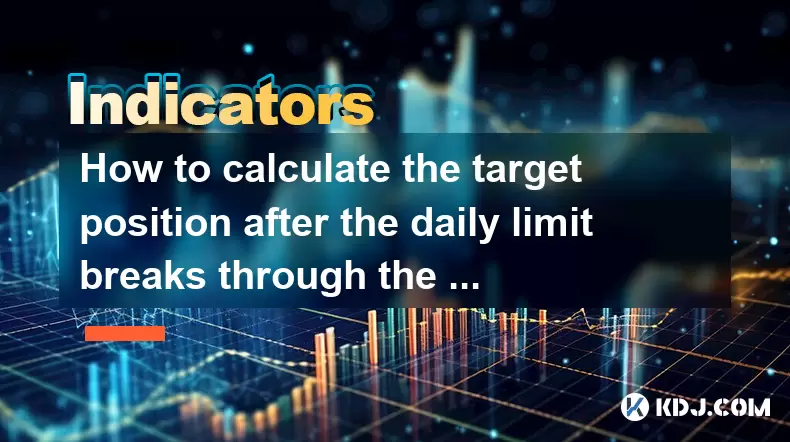
How to calculate the target position after the daily limit breaks through the previous high?
Jun 23,2025 at 02:57pm
Understanding the Daily Limit BreakthroughIn cryptocurrency trading, a daily limit typically refers to the maximum price movement allowed within a single trading day on certain exchanges. When this limit is breached, especially when it surpasses the previous high, traders often seek to calculate the target position or expected price movement following s...
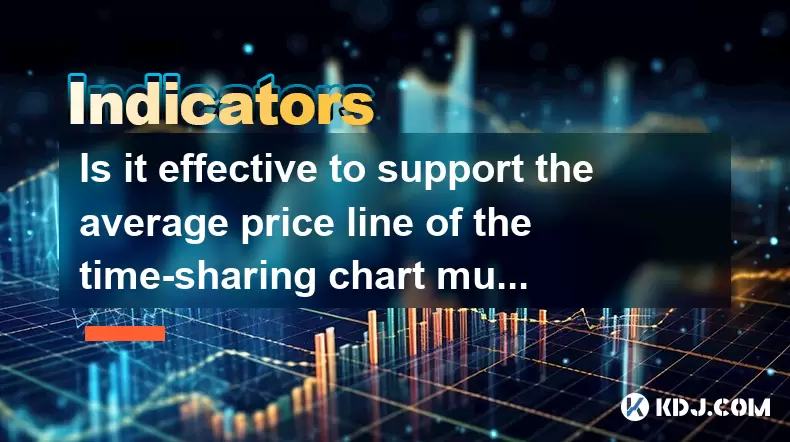
Is it effective to support the average price line of the time-sharing chart multiple times?
Jun 23,2025 at 01:36pm
Understanding the Average Price Line in Time-Sharing ChartsIn cryptocurrency trading, time-sharing charts refer to real-time price charts that display price movements over short intervals, often within a single trading day. Within these charts, the average price line, also known as the Volume Weighted Average Price (VWAP), is a commonly used technical i...
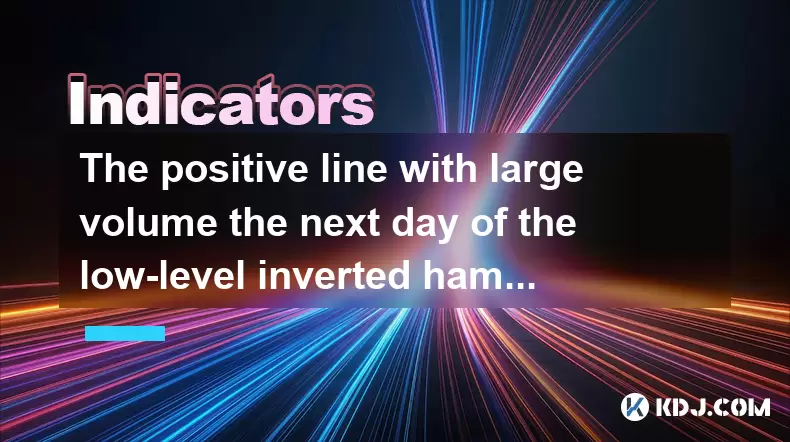
The positive line with large volume the next day of the low-level inverted hammer line confirms the reversal?
Jun 23,2025 at 01:21pm
Understanding the Low-Level Inverted Hammer LineThe inverted hammer line is a single candlestick pattern that typically appears at the end of a downtrend. It has a small real body near the bottom of the trading range and a long upper shadow, indicating that bulls attempted to push prices higher but were met with selling pressure. When this pattern forms...
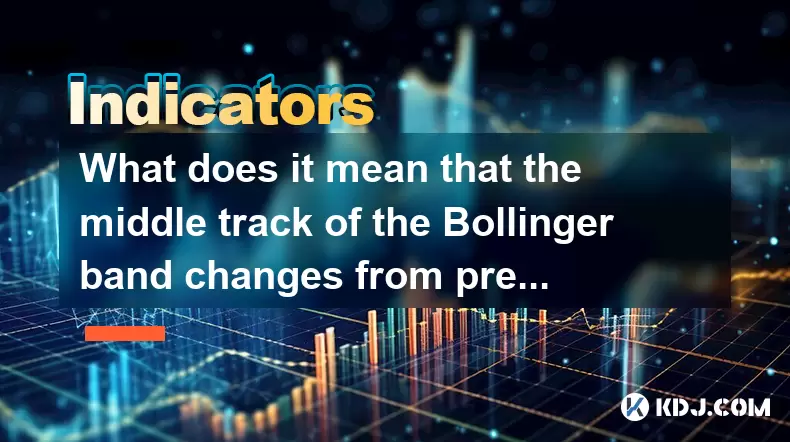
What does it mean that the middle track of the Bollinger band changes from pressure to support?
Jun 23,2025 at 03:01pm
Understanding the Bollinger Band StructureThe Bollinger Bands are a technical analysis tool used in cryptocurrency trading, developed by John Bollinger. They consist of three lines: a simple moving average (SMA) in the middle and two standard deviation bands above and below it. The middle track is typically set at 20 periods and serves as a baseline for...
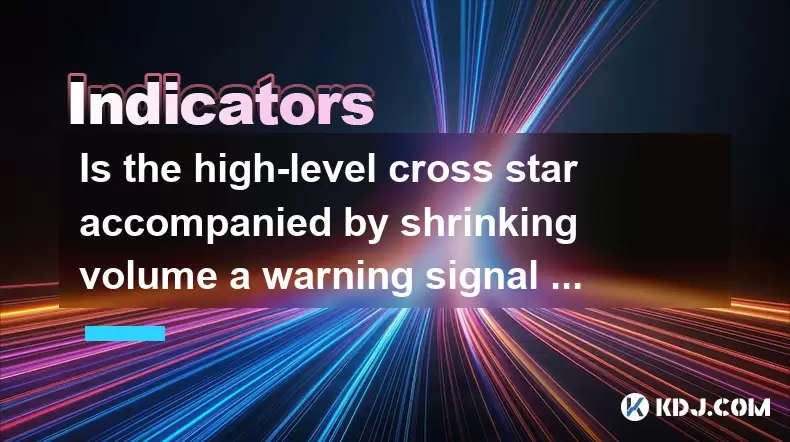
Is the high-level cross star accompanied by shrinking volume a warning signal of peaking?
Jun 23,2025 at 01:28pm
Understanding High-Level Cross Star PatternsIn the world of cryptocurrency trading, candlestick patterns are essential tools for technical analysis. One such pattern is the high-level cross star, which appears as a doji or near-doji candle at a significant resistance level. This pattern often indicates indecision in the market and can be interpreted as ...

How to read the sideways consolidation after the bottom volume and long positive line?
Jun 23,2025 at 02:28pm
Understanding the Sideways ConsolidationWhen analyzing cryptocurrency charts, sidewards consolidation refers to a phase where prices move within a narrow range without a clear upward or downward trend. This pattern often appears after significant price movements, such as a sharp increase followed by a period of equilibrium between buyers and sellers. In...

How to calculate the target position after the daily limit breaks through the previous high?
Jun 23,2025 at 02:57pm
Understanding the Daily Limit BreakthroughIn cryptocurrency trading, a daily limit typically refers to the maximum price movement allowed within a single trading day on certain exchanges. When this limit is breached, especially when it surpasses the previous high, traders often seek to calculate the target position or expected price movement following s...

Is it effective to support the average price line of the time-sharing chart multiple times?
Jun 23,2025 at 01:36pm
Understanding the Average Price Line in Time-Sharing ChartsIn cryptocurrency trading, time-sharing charts refer to real-time price charts that display price movements over short intervals, often within a single trading day. Within these charts, the average price line, also known as the Volume Weighted Average Price (VWAP), is a commonly used technical i...

The positive line with large volume the next day of the low-level inverted hammer line confirms the reversal?
Jun 23,2025 at 01:21pm
Understanding the Low-Level Inverted Hammer LineThe inverted hammer line is a single candlestick pattern that typically appears at the end of a downtrend. It has a small real body near the bottom of the trading range and a long upper shadow, indicating that bulls attempted to push prices higher but were met with selling pressure. When this pattern forms...

What does it mean that the middle track of the Bollinger band changes from pressure to support?
Jun 23,2025 at 03:01pm
Understanding the Bollinger Band StructureThe Bollinger Bands are a technical analysis tool used in cryptocurrency trading, developed by John Bollinger. They consist of three lines: a simple moving average (SMA) in the middle and two standard deviation bands above and below it. The middle track is typically set at 20 periods and serves as a baseline for...

Is the high-level cross star accompanied by shrinking volume a warning signal of peaking?
Jun 23,2025 at 01:28pm
Understanding High-Level Cross Star PatternsIn the world of cryptocurrency trading, candlestick patterns are essential tools for technical analysis. One such pattern is the high-level cross star, which appears as a doji or near-doji candle at a significant resistance level. This pattern often indicates indecision in the market and can be interpreted as ...
See all articles
























































































